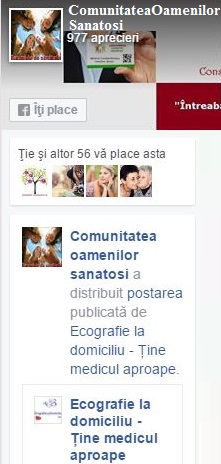ORDIN Nr. 533/2021 din 22 aprilie 2021
privind modificarea anexei la Ordinul ministrului sănătăţii nr. 487/2020 pentru
aprobarea protocolului de tratament al infecţiei cu virusul SARS-CoV-2
– întreruperea fumatului. Monitorizarea pacientului se face clinic şi biologic: – biochimie zilnic la pacientul cu forme medii-severe-critice;
– repetarea imagisticii şi a testelor biologice se face obligatoriu în regim de urgenţă în caz de agravare clinică. B.7.
Interventii terapeutice controversate
Deşi s-a discutat necesitatea înlocuirii inhibitorilor ACE şi/sau a sartanilor
din tratamentul pacientului cu COVID-19, Societatea Europeană de Cardiologie
a emis la 13 martie 2020 o recomandare de a fi menţinute în schemele de
tratament. O recomandare identică a fost emisă în SUA în 17 martie 2020 de
către Asociaţia Americană de Cardiologie. A existat o reticenţă privind utilizarea AINS în tratamentul COVID-19, legată de inhibarea efectului benefic al inflamaţiei, susţinută de date clinice restrânse.
Este raţional să se administreze în scop simptomatic fie antitermice, fie AINS,
ţinându-se cont de contraindicaţii generale şi de efectele adverse posibile ale
fiecărei categorii de medicamente. Pacienţii aflaţi în tratament cu AINS pentru
diverse afecţiuni pot continua dacă nu există interacţiuni medicamentoase
majore cu medicaţia pentru COVID-19, cu monitorizarea efectelor adverse. Sunt considerate inutile şi chiar nocive: imunoglobuline de administrare
intravenoasă, refacerea volemiei cu soluţii coloidale (discutabil pentru
albumină), bilanţul hidric pozitiv la cazurile severe. La pacienţii cu pneumonie
severă nu se justifică hidratarea parenterală, inclusiv administrarea de vitamine
în perfuzie.
C. Recomandări privind tratamentul cazurilor spitalizate Sumarul recomandărilor privind tratamentul cazurilor de COVID-19 spitalizate în funcţie de severitatea bolii este prezentat în tabelul nr. 5.
Tabelul 5 – Tratament propus în funcţie de severitatea cazului de COVID-19
la pacienţii spitalizaţi _____________________________________________________________________ | Forma de boală | Tratament recomandat | Durata |
| (severitate) | | recomandată | |________________|_____________________________________|______________| | Asimptomatic | Nu | – | |________________|_____________________________________|______________|
| Uşoară | Simptomatice | Depinde de |
| | Antiviral pentru pacientul cu | evoluţia | | | factori de risc evolutiv sever | pacientului. |
| | Profilaxie anticoagulantă | |
| | recomandată în cazul în care | | | | pacientul nu are în curs tratament | | | | anticoagulant | | |________________|_____________________________________|______________| | Medie | Simptomatice | Depinde de | | Pneumonie fără | Antiviral de administrat cât mai | evoluţia | | criterii de | precoce | pacientului. | | severitate | Anticoagulante – profilaxie sau | |
| | terapie | | |________________|_____________________________________|______________|
| Severă*a)/ | Antivirale (rol clinic discutabil | Depinde de |
| Critică*b) | dincolo de 14 zile de la debutul | evoluţia | | | simptomelor; posibilă limitare a | pacientului. | | | transmiterii) | | | | + anticoagulant – profilaxie sau | | | | terapie | |
| | + dexametazonă (corticoid), 10 zile | |
| | sau în funcţie de evoluţie | | | | + imunomodulare în cazuri selectate | | | | În indicaţii selective: plasmă de | | | | convalescent, antibiotice | | |________________|_____________________________________|______________| *a) Sever = minimum unul dintre: frecvenţa respiratorie >/= 30/min (>/=
40/min la preşcolar); SaO2 </= 93%; PaO2/FiO2 < 300; infiltrate pulmonare
care cresc cu mai mult de 50% în 24 – 48 ore. *b) Critic = minimum unul dintre: detresă respiratorie acută; sepsis; alterarea conştienţei; MSOF.
D. Recomandări pentru pacientul îngrijit la domiciliu
1. Pentru pacientul asimptomatic: – nu necesită tratament, chiar dacă are factori de risc asociaţi în general cu evoluţie mai severă a COVID-19;
– de confirmat diagnosticul de infecţie SARS-CoV-2.
2. Pentru pacientul simptomatic:
– simptomaticele sunt permise – a se vedea capitolul B.6. Simptomatice şi alte măsuri terapeutice (atenţie la contraindicaţiile fiecărui produs!);
– profilaxia anticoagulantă: se are în vedere dacă: 1) pacientul cu infecţie SARS-CoV-2 are şi o mobilitate redusă; sau 2) dacă are o formă medie-severă de COVID-19;
– nu se administrează antibiotice (de exemplu, azitromicina) pentru a trata o viroză, aşa cum este COVID-19;
– este contraindicată administrarea de dexametazonă sau de alţi corticosteroizi în formele uşoare de COVID-19 (faza iniţială a bolii) pentru că poate stimula replicarea virală şi agrava evoluţia bolii; – antiviralele descrise sunt utilizate off-label, aşa încât se pot prescrie pentru administrare ambulatorie doar dacă sunt îndeplinite simultan următoarele condiţii:
• dacă pacientul este de acord;
• se iniţiază la pacienţi în primele 7 zile de boală (faza virală a bolii);
• sunt prescrise de către medicul care a evaluat pacientul (medic de familie
sau medic de la centrul de evaluare), după evaluare corespunzătoare: clinică,
biologică, imagistică;
• cu continuarea monitorizării pacientului pe parcursul tratamentului şi
ulterior până la vindecare;
– medicaţia antivirală de administrare parenterală este de utilizat doar în
mediul spitalicesc.
Observaţie: În ultimele luni se prescriu foarte mult la domiciliu în formele
uşoare, inutil şi cu riscuri: azitromicina, anticoagulante şi corticoizi (medrol,
dexametazonă)!
3. Pacientul monitorizat la domiciliu trebuie trimis rapid într-o unitate
spitalicească dacă are una dintre următoarele manifestări: – dispnee; – febră care reapare după o perioadă de afebrilitate sau care persistă mai mult de 5 – 6 zile; – tuse care apare sau care persistă dincolo de zilele 5 – 6 de boală;
– SpO2 </= 94% la pacientul care nu avea probleme respiratorii cronice.
Tabelul 6 – Tratament propus în funcţie de severitatea cazului de COVID-19 la pacienţii îngrijiţi la domiciliu _____________________________________________________________________ | Forma de boală | Tratament recomandat | Durata | | (severitate) | | recomandată | |________________|_____________________________________|______________| | Asimptomatic | Nu | – | |________________|_____________________________________|______________| | Uşoară | Simptomatice | Depinde de | | | Un antiviral disponibil pentru cei | evoluţia | | | cu factori de risc evolutiv sever | pacientului. | |________________|_____________________________________|______________| | Medie | Antivirale de administrat cât mai | Depinde de | | Pneumonie fără | precoce | evoluţia | | criterii de | Anticoagulante – profilaxie sau | pacientului. | | severitate | terapie | | |________________|_____________________________________|______________| | Severă*a)/ | Nu există condiţii de îngrijire la | | | Critică*b) | domiciliu! | | |________________|_____________________________________|______________| *a) Sever = minimum unul dintre: frecvenţa respiratorie >/= 30/min (>/=
40/min la preşcolar); SaO2 </= 93%; PaO2/FiO2 < 300; infiltrate pulmonare
care cresc cu mai mult de 50% în 24 – 48 ore. *b) Critic = minimum unul dintre: detresă respiratorie acută; sepsis; alterarea
conştienţei; MSOF.
Acest protocol se bazează pe următoarele referinţe bibliografice*):
*) Referinţele bibliografice sunt reproduse în facsimil. 1. World Health Organization. Clinical management of COVID-19: interim
guidance, 27 May 2020. Acces la
https://www.who.int/publications/i/item/clinical-management-of-covid-19
2. European Centre for Disease Prevention and Control. Infection prevention
and control and preparedness for COVID-19 în healthcare settings, 9 February
2021. Stockholm: ECDC; 2021 3. Interim clinical guidance for adults with suspected or confirmed with
COVID-19 în Belgium, 9 March 2021; Version 17. https://covid-
19.sciensano.be/sites/default/files/Covid19/COVID-
19_InterimGuidelines_Treatment_ENG.pdf 4. Coronavirus Disease 2019 (COVID-19): Treatment Guidelines. Acces la
https://www.covid19treatmentguidelines.nih.gov/ 5. IDSA guidelines on the tratament and management of patients with
COVID-19 https://www.idsociety.org/practice-guideline/covid-19-guideline-
treatment-and-management/ (accesat la 4 aprilie 2021). 6. Al-Tawfiq JA, Al-Homoud AH, Memish ZA. Remdesivir as a possible
therapeutic option for the COVID-19. Travel Medicine and Infectious Disease.
2020 Mar 5: 101615 7. Sheahan TP, Sims AC, Leist SR et al. Comparative therapeutic efficacy of
remdesivir and combination lopinavir, ritonavir, and interferon beta against
MERS-CoV. Nat Commun. 2020; 11: 222. 8. Wang M, Cao R, Zhang L et al. Remdesivir and chloroquine effectively
inhibit the recently emerged novel coronavirus (2019-nCoV) în vitro. Cell Res.
2020; 30: 269 – 271. doi: 10.1038/s41422-020-0282-0. Epub 2020 Feb 4. 9. Wang Y, Zhang D, Guanghua D et al. Remdesivir în adults with severe
COVID-19: a randomised, double-blind, placebocontrolled, multicentre trial.
The Lancet, published online 29 april 2020, doi.org/10.1016/S0140-
6736(20)31022-9 10. Beigel JH, Tomashek KM, Dodd LE et al. Remdesivir for the Treatment
of Covid-19 – Final Report. N Engl J Med. 2020: NEJMoa2007764. doi:
10.1056/NEJMoa2007764. 11. WHO Solidarity Trial Consortium, Pan H, Peto R, Henao-Restrepo AM
et al. Repurposed Antiviral Drugs for Covid-19 – Interim WHO Solidarity Trial
Results. N Engl J Med. 2020 Dec 2. doi: 10.1056/NEJMoa2023184. 12. Goldman JD, Lye DCB, Hui DS, et al. Remdesivir for 5 or 10 Days în
Patients with Severe Covid-19. N Engl J Med 2020 May 27. doi:
10.1056/NEJMoa2015301 13. https://www.ema.europa.eu/en/documents/product-information/veklury-
epar-product-information_ro.pdf (accesat la 18.07.2020) 14. Emergency use authorization (EUA) of casirivimab and imdevimab.
casirivimab and imdevimab EUA Letter of Authorization (fda.gov) 15. Emergency use authorization (EUA) of bamlanivimab and etesevimab.
Bamlanivimab and Etesevimab EUA Letter of Authorization February 25 2021
(fda.gov)
16. Du Z, Zhu F, Guo F, Yang B, Wang T. Detection of antibodies against
SARS_CoV_2 în patients with COVID_19 J Med Virol. 2020 Apr 3. doi:
10.1002/jmv.25820. 17. Long, Q., Tang, X., Shi, Q. et al. Clinical and immunological assessment
of asymptomatic SARS-CoV-2 infections. Nat Med (2020).
https://doi.org/10.1038/s41591-020-0965-6 18. Salazar E, Kuchipudi SV, Christensen PA, et al. Relationship between
Anti-Spike Protein Antibody Titers and SARS-CoV-2 în Vitro Virus
Neutralization în Convalescent Plasma. bioRxiv 2020. 19. Chai KL, Valk SJ, Piechotta V et al. Convalescent plasma or
hyperimmune immunoglobulin for people with COVID-19: a living systematic
review. Cochrane Database Syst Rev. 2020; 10: CD013600. doi:
10.1002/14651858.CD013600.pub3. 20. Libster R, Pérez Marc G et al. Early High-Titer Plasma Therapy to
Prevent Severe Covid-19 în Older Adults. N Engl J Med. 2021 Feb
18;384(7):610-618. doi: 10.1056/NEJMoa2033700. 21. Joyner M, Wright RS, Fairweather D et al. Early safety indicators of
COVID-19 convalescent plasma în 5,000 patients. J Clin Invest. 2020.
https://doi.org/10.1172/JCI140200. 22. Shrestha DB, Budhathoki P, Khadka S et al. Favipiravir versus other
antiviral or standard of care for COVID-19 treatment: a rapid systematic review
and meta-analysis. Virol J. 2020; 17:141. doi: 10.1186/s12985-020-01412-z. 23. Udwadia ZF, Singh P, Barkate H et al. Efficacy and Safety of Favipiravir,
an Oral RNA-Dependent RNA Polymerase Inhibitor, în Mild-to-Moderate
COVID-19: A Randomized, Comparative, Open-Label, Multicenter, Phase 3
Clinical Trial. Int J Infect Dis. 2020: S1201-9712(20)32453-X. doi:
10.1016/j.ijid.2020.11.142. 24. Catteau L, Dauby N, Montourcy M, et al. Low-dose hydroxychloroquine
therapy and mortality în hospitalised patients with COVID-19: a nationwide
observational study of 8075 participants. Int J Antimicrob Agents. 2020; 56:
106144. 25. Chorin E, Dai M, Shulman E, et al. The QT Interval în Patients with
SARS-CoV-2 Infection Treated with Hydroxychloroquine/Azithromycin.
medRxiv 2020. 26. Ivermectin | COVID-19 Treatment Guidelines (nih.gov) 27. The RECOVERY Collaborative Group. Dexamethasone în Hospitalized
Patients with Covid-19 – Preliminary Report. NEJM. DOI:
10.1056/NEJMoa2021436 28. Villar J, Belda J, Anón JM et al. Evaluating the efficacy of
dexamethasone în the treatment of patients with persistent acute respiratory
distress syndrome: study protocol for a randomized controlled trial. Trials.
2016; 17: 342. doi: 10.1186/s13063-016-1456-4.
29. Tomazini BM, Maia IS, Cavalcanti AB et al. Effect of Dexamethasone on
Days Alive and Ventilator-Free în Patients With Moderate or Severe Acute
Respiratory Distress Syndrome and COVID-19: The CoDEX Randomized
Clinical Trial. JAMA. 2020; 324: 1307-16. doi: 10.1001/jama.2020.17021. 30. Rosas IO, Brau N, Waters M et al. Tocilizumab în Hospitalized Patients
with COVID-19 Pneumonia. Accesat la
https://www.medrxiv.org/content/10.1101/2020.08.27.20183442v2.article-
metrics 31. F Hoffman-La Roche Ltd. Roche’s phase III EMPACTA study showed
Actemra/RoActemra reduced the likelihood of needing mechanical ventilation
în hospitalised patients with COVID-19 associated pneumonia. Published
September 18, 2020. https://www.roche.com/investors/updates/inv-update-
2020-09-18.htm 32. Gordon AC, Mouncey PR, Al-Beidh F et al. Interleukin-6 Receptor
Antagonists în Critically Ill Patients with Covid-19 – Preliminary report.
medRxiv. 2021: 2021.2001.2007.21249390 33. RECOVERY Collaborative Group. Tocilizumab în patients admitted to
hospital with COVID-19 (RECOVERY): preliminary results of a randomised,
controlled, open-label, platform trial. doi:
https://doi.org/10.1101/2021.02.11.21249258 34. Navarro-Millán I, Sattui SE, Lakhanpal A et al. Use of Anakinra to
Prevent Mechanical Ventilation în Severe COVID-19: A Case Series Arthritis
Rheumatol. 2020;10.1002/art.41422. 35. Balkhair A, Al-Zakwani I, Al Busaidi M et al. Anakinra în hospitalized
patients with severe COVID-19 pneumonia requiring oxygen therapy: results of
a prospective, open-label, interventional study. Int J Infect Dis. 2020: S1201-
9712(20)32458-9. doi: 10.1016/j.ijid.2020.11.149. 36. Kooistra EJ, Waalders NJB, Grondman I et al. Anakinra treatment în
critically ill COVID-19 patients: a prospective cohort study. Crit Care. 2020;
24: 688. doi: 10.1186/s13054-020-03364-w. 37. CORIMUNO-19 Collaborative group. Effect of anakinra versus usual
care în adults în hospital with COVID-19 and mild-tomoderate pneumonia
(CORIMUNO-ANA-1): a randomised controlled trial. Lancet Respir Med.
2021; 9: 295 – 304. doi: 10.1016/S2213-2600(20)30556-7. 38. Kalil AC, Patterson TF, Mehta AK et al. Baricitinib plus Remdesivir for
Hospitalized Adults with Covid-19. N Engl J Med. 2020 Dec
11:NEJMoa2031994. doi: 10.1056/NEJMoa2031994. 39. US Food and Drug Administration. Letter of authorization: Emergency
use authorization (EUA) for emergency use of baricitinib, în combination with
remdesivir, for treatment of suspected or laboratory confirmed coronavirus
disease 2019 (COVID-19) în hospitalized adults and pediatric patients 2 years
of age or older, requiring supplemental oxygen, invasive mechanical ventilation,
or extracorporeal membrane oxygenation (ECMO). 2020 Nov 19.
40. Smeeth L, Cook C, Thomas S et al. Risk of deep vein thrombosis and
pulmonary embolism after acute infection în a community setting. Lancet 2006;
367: 1075-9. 41. Schmidt M, Horvath_Puho E, Thomsen RW et al. Acute infections and
venous thromboembolism. J Intern Med 2012; 271: 608-18. 42. Rogers MA, Levine DA, Blumberg N et al. Triggers of hospitalization for
venous thromboembolism. Circulation 2012; 125: 2092-9. 43. Cui S. Prevalence of venous thromboembolism în patients with severe
novel coronavirus pneumonia. J. Thromb. Haemost. 2020; 18: 1421-4. 44. Hadid T, Kafri Z, Al-Katib A. Coagulation and anticoagulation în
COVID-19. Blood Rev. 2020: 100761. doi: 10.1016/j.blre.2020.100761. 45. Panigada M, Bottino N, Tagliabue P, et. Al. Hypercoagulability of
COVID-19 Patients în Intensive Care Unit. A Report of Thromboelastography
Findings and Other Parameters of Hemostasis J Thromb Haemost.
2020;10.1111/jth.14850. 46. Becker RC. COVID-19 update: Covid-19-associated coagulopathy. J
Thromb Thrombolysis. 2020; 50: 54 – 67. doi: 10.1007/s11239-020-02134-3. 47. Magro C, Mulvey JJ, Berlin D et al. Complement associated
microvascular injury and thrombosis în the pathogenesis of severe COVID-19
infection: A report of five cases. Transl Res. 2020; 220:1-13. doi:
10.1016/j.trsl.2020.04.007. 48. Yu J, Yuan X, Chen H et al. Direct activation of the alternative
complement pathway by SARS-CoV-2 spike proteins is blocked by factor D
inhibition. Blood. 2020 Oct 29;136(18):2080-2089. doi:
10.1182/blood.2020008248. 49. Llitjos JF, Leclerc M, Chochois C et al. High incidence of venous
thromboembolic events în anticoagulated severe COVID-19 patients. J Thromb
Haemost 2020; 18: 1743-6. 50. Lodigiani C, Iapichino G, Carenzo L et al. Venous and arterial
thromboembolic complications în COVID-19 patients admitted to an academic
hospital în Milan, Italy . Thromb Res 2020; 191: 9 – 14. 51. Klok FA, Kruip MJHA, van der Meer NJM et al. Incidence of thrombotic
complications în critically ill ICU patients with COVID-19. Thromb Res. 2020;
S0049-3848(20)30120-1 52. Menter T, Haslbauer JD, Nienhold R et al. Postmortem examination of
COVID-19 patients reveals diffuse alveolar damage with severe capillary
congestion and variegated findings în lungs and other organs suggesting
vascular dysfunction. Histopathology. 2020; 77: 198 – 209. doi:
10.1111/his.14134. 53. Piazza G., Campia U., Hurwitz S., et al. „Registry of arterial and venous
thromboembolic complications în patients with COVID-19” . J Am Coll Cardiol
2020; 76: 2060-72
54. Gervaise A, Bouzad C, Peroux E, Helissey C. Acute pulmonary embolism
în non-hospitalized COVID-19 patients referred to CTPA by emergency
department. Eur Radiol. 2020; 30: 6170-7. doi: 10.1007/s00330-020-06977-5. 55. Becker RC. COVID-19 update: Covid-19-associated coagulopathy. J
Thromb Thrombolysis. 2020; 50: 54 – 67. doi: 10.1007/s11239-020-02134-3. 56. Etkin Y, Conway AM, Silpe J et al. Acute Arterial Thromboembolism în
Patients with COVID-19 în the New York City Area. Ann Vasc Surg. 2021; 70:
290-4. doi: 10.1016/j.avsg.2020.08.085. 57. Nazy I, Jevtic SD, Moore JC et al. Platelet-activating immune complexes
identified în critically ill COVID-19 patients suspected of heparin-induced
thrombocytopenia. J Thromb Haemost. 2021 58. Patell R, Khan AM, Bogue T et al. Heparin induced thrombocytopenia
antibodies în Covid-19. Am J Hematol. 2020: 10.1002/ajh.25935. doi:
10.1002/ajh.25935. 59. Ho KS, Herrera Y, Pattupara A et al. Anticoagulation And Covid-19: A
Meta-Analysis. Chest. 2020; 158: A2205. doi:10.1016/j.chest. 2020.08.1885. 60. Eriksson B., Borris L., Friedman R., Haas S., Huisman M., Kakkar A., et
al. (2008) Rivaroxaban versus enoxaparin for thromboprophylaxis after hip
arthroplasty. N Engl J Med 358: 2765 – 2775 61. Kollias A, Kyriakoulis KG, Dimakakos E et al. Thromboembolic risk and
anticoagulant therapy în COVID-19 patients: emerging evidence and call for
action. Br J Haematol. 2020; 189: 846-7. doi: 10.1111/bjh.16727. 62. Kang Y, Chen T, Mui D et al. Cardiovascular manifestations and
treatment considerations în COVID-19. Heart. 2020; 106: 1132-41. doi:
10.1136/heartjnl-2020-317056. 63. Bikdeli B, Madhavan MV, Jimenez D et al. COVID-19 and Thrombotic
or Thromboembolic Disease: Implications for Prevention, Antithrombotic
Therapy, and Follow-Up: JACC State-of-the-Art Review. J Am Coll Cardiol.
2020; 75: 2950-73. doi: 10.1016/j.jacc.2020.04.031. 64. Atallah B, Mallah SI, AlMahmeed W. Anticoagulation în COVID-19. Eur
Heart J Cardiovasc Pharmacother. 2020; 6: 260-1. doi: 10.1093/ehjcvp/pvaa036. 65. Fauvel C, Weizman O, Trimaille A et al. Pulmonary embolism în
COVID-19 patients: a French multicentre cohort study. Eur Heart J. 2020 Jul
1;41(32):3058-3068. doi: 10.1093/eurheartj/ehaa500. 66. Testa S, Prandoni P, Paoletti O et al. Direct oral anticoagulant plasma
levels’ striking increase în severe COVID-19 respiratory syndrome patients
treated with antiviral agents: The Cremona experience. J Thromb Haemost.
2020; 18: 1320-3. doi: 10.1111/jth.14871. 67. Barbar S, Noventa F, Rossetto V et al. A risk assessment model for the
identification of hospitalized medical patients at risk for venous
thromboembolism: the Padua Prediction Score. J Thromb Haemost. 2010; 8:
2450-7. doi: 10.1111/j.1538-7836.2010.04044.x.
68. Thachil J, Tang N, Gando S, Falanga A, Cattaneo M, Levi M, et al. ISTH
interim guidance on recognition and management of coagulopathy în COVID-
19. published: 25 March 25, 2020 10.1111/jth.14810 69. Song JC, Wang G, Zhang W et al.Chinese expert consensus on diagnosis
and treatment of coagulation dysfunction în COVID-19. Military Medical
Research (2020) 7:19 https://doi.org/10.1186/s40779-020-00247-7 70. Tang N, Li D, Wang X, Sun Z. Abnormal coagulation parameters are
associated with poor prognosis în patients with novel coronavirus pneumonia. J
Thromb Haemost. 2020; 18: 844 – 847. doi: 10.1111/jth.14768 71. Ma L, Sahu SK, Cano M et al. Increased complement activation is a
distinctive feature of severe SARS-CoV-2 infection. bioRxiv. 2021 Feb
23:2021.02.22.432177. doi: 10.1101/2021.02.22.432177. 72. www.uptodate.com Coronavirus disease 2019 (COVID-19):
Hypercoagulability, last updated: Apr 08, 2021. 73. Pannucci CJ, Fleming KI, Holoyda K et al. Enoxaparin 40 mg per Day Is
Inadequate for Venous Thromboembolism Prophylaxis After Thoracic Surgical
Procedure. Ann Thorac Surg 2018; 106: 404-11. 74. Goldhaber S.Z., Leizorovicz A., Kakkar A.J., et al.ADOPT Trial
Investigators. Apixaban versus enoxaparin for thromboprophylaxis în medically
ill patients. N Engl J Med 2011; 365: 2167-77. 75. Barnes GD, Burnett A, Allen A et al. Thromboembolism and
anticoagulant therapy during the COVID-19 pandemic: interim clinical
guidance from the anticoagulation forum. J Thromb Thrombolysis. 2020; 50: 72
– 81. doi: 10.1007/s11239-020-02138-z. 76. Barnes GD, Burnett A, Allen A et al. Thromboembolism and
anticoagulant therapy during the COVID-19 pandemic: interim clinical
guidance from the anticoagulation forum. J Thromb Thrombolysis. 2020; 50: 72
– 81. doi: 10.1007/s11239-020-02138-z. 77. Ruan Q, Yang K, Wang W et al. Clinical predictors of mortality due to
COVID-19 based on an analysis of data of 150 patients from Wuhan, China.
Intensive Care Med, 2020, Mar 3. https://doi.org/10.1007/s00134-020-05991-x 78. Conforti C, Giuffrida R, Zalaudek I, Di Meo N. Doxycycline, a widely
used antibiotic în dermatology with a possible anti_inflammatory action against
IL_6 în COVID_19 outbreak. Dermatologic Therapy,
https://doi.org/10.1111/dth.13437 79. European Centre for Disease Prevention and Control. Surveillance of
antimicrobial resistance în Europe 2018. Stockholm: ECDC; 2019. 80. Surviving Sepsis Campaign: Guidelines on the Management of Critically
Ill Adults with Coronavirus Disease 2019 (COVID-19). Intensive Care
Medicine. Accesat la https://www.esicm.org/ssc-covid19-guidelines/ 81. https://www.escardio.org/Councils/Council-on-Hypertension-
(CHT)/News/position-statement-of-the-esc-council-on-hypertension-on-ace-
inhibitors-and-ang
82. Patients taking ACE-i and ARBs who contract COVID-19 should
continue treatment, unless otherwise advised by their physician.
HFSA/ACC/AHA statement addresses concerns re: using RAAS antagonists în
COVID-19. https://www.hfsa.org/patients-taking-ace-i-and-arbs-who-contract-
covid-19-should-continue-treatment-unless-otherwise-advised-by-their-
physician/ 83. Expertise pharmacovigilance AINS et COVID-19, Mai 2020
Dr. Daniel Ganea este "Doctorul tău", Medic Specialist Medic de familie, medic rezident cardiologie, cu Competență în Ecografie și a scris numeroase articole pentru pacienți.
A început cariera ca medic specialist în 2009 în Urgență, a lucrat și pe Ambulanță, aflând ce-și doresc de la medic pacienții care solicită online consultații medicale cu medic specialist la domiciliu. Astfel a aparut ConsultatiiLaDomiciliu.ro
Programează consultație
"Cine te poate sfatui mai bine decat medicul, specialist in domeniul lui?"
- Adevărata cauză a rezistentei la insulină - aprilie 24, 2024
- Psihiatrie - aprilie 20, 2024
- De ce sa apelezi la medicul Concierge? - aprilie 19, 2024
Ce spun pacientii:
Consultatii la distantă Plata online cu cardul:

Cum mă programez?
0760-777-321
taxabil după 5 minute
Accept termenii și condițiile
click pentru a-i citi

Fii la curent
Articole recente
- Adevărata cauză a rezistentei la insulină
- Psihiatrie
- Geriatrie si gerontologie
- Geriatrie
- De ce sa apelezi la medicul Concierge?
- Codul corpului, Codul emotiilor
- Consult ORL la domiciliu
- Nou din seria „Cyborg 2023”: medicii chinezi creează un încărcător wireless care poate rămâne în sigurantă în corpul uman
- La limita medicinei – detectia diabetului prin analiza vocii
- Sunt asigurat CASS? Cum verific? Cum fac?
- Din nou despre SM (scleroza multipla) de data asta cu o solutie
Comunitatea pe Facebook
 Cele mai citite articole
Cele mai citite articole
- Adevărata cauză a rezistentei la insulină
- Psihiatrie
- Geriatrie si gerontologie
- Geriatrie
- De ce sa apelezi la medicul Concierge?
- Codul corpului, Codul emotiilor
- Consult ORL la domiciliu
- Nou din seria „Cyborg 2023”: medicii chinezi creează un încărcător wireless care poate rămâne în sigurantă în corpul uman
- La limita medicinei – detectia diabetului prin analiza vocii
- Sunt asigurat CASS? Cum verific? Cum fac?






















